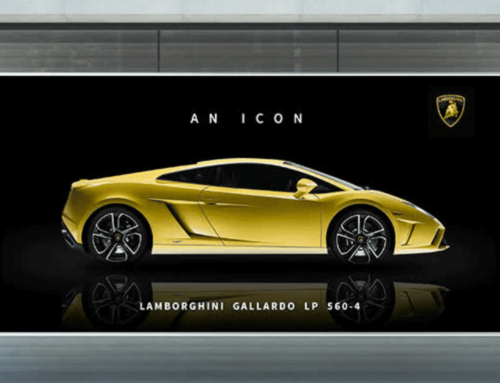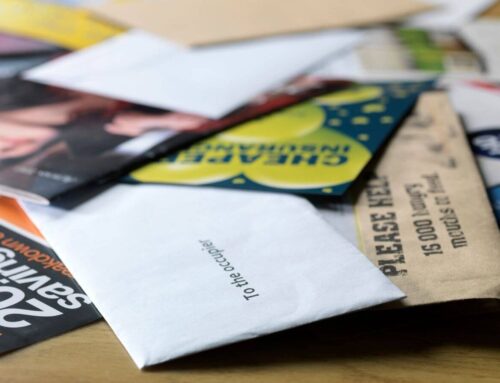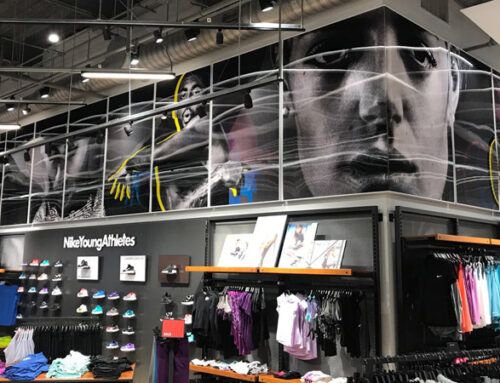Introduction
Hey there! Whether you’re a designer or just starting out with lenticular printing this guide is here to walk you through the process and help you create some impressive results. The aim of this lenticular print guide is to break down the science behind the magic and offer tips for making your prints pop.
Lenticular printing sits at the crossroads of art and science. This technique allows images to shift or animate as viewers change their perspective giving off a sense of depth, movement or transformation. Initially used for fun giveaways lenticular printing has evolved into a player in advertising, packaging and decorative art serving as a tool for boosting customer engagement and conveying product or brand narratives.
In today’s age lenticular prints shine by grabbing attention. They provide a hands-on experience that digital screens can’t match, making them highly effective, for marketing campaigns, educational materials and artworks aiming to engage viewers.. They offer a tactile, interactive experience that digital screens cannot replicate, making them highly effective for marketing, educational tools, and artwork that seeks to engage viewers on a deeper level.
As we dive into the world of lenticular printing we will uncover its mechanics, diverse applications and advantages. This guide is here to explain the science behind the world of lenticular printing, offer tips on creating these prints and demonstrate the diverse applications of this technology in enhancing visual communication.
What is Lenticular Printing?
Lenticular printing is a specialized printing technique that creates an optical illusion, allowing printed images to change or move as the viewer’s perspective shifts. This effect is achieved by layering two or more images together and covering them with a lenticular lens—a series of magnifying lenses that direct the eye to different images at different angles. The result is a print that can exhibit various visual effects such as 3D depth, motion (animation), morphing (one image transforming into another), or zoom (the image appears to move closer or farther away).
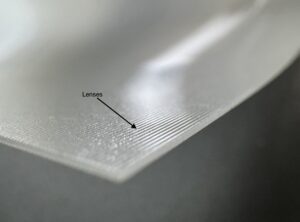
Lenticular Lens
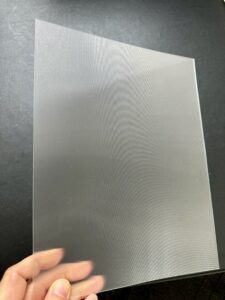
How Lenticular Printing Works: The Science Behind the Magic
The core of lenticular printing lies in its ability to manipulate light and perception. The lenticular lens is made up of a series of parallel, convex strips that refract light differently depending on the viewing angle. Each strip acts as a separate viewing window to the images beneath, which are sliced into narrow strips and interlaced in a way that corresponds with the lens. As you move around a lenticular print, the lens directs your eyes to different sets of image strips, creating the illusion of movement or depth.
Types of Lenticular Effects
- 3D Depth: This effect gives the perception of physical depth within the image, making parts of the image appear to pop out or recede into the background. It’s achieved by layering images with slight variations in perspective, mimicking how each of our eyes views the world from a slightly different angle.
- Flip: A flip effect changes from one image to another completely different image with a change in viewing angle. This can be used to show before-and-after transformations, to hide/reveal messages, or to create an engaging visual surprise.
- 3-Flip: Like the standard flip, this effect changes from one image to another, but this effect simply incorporates three images instead of two.
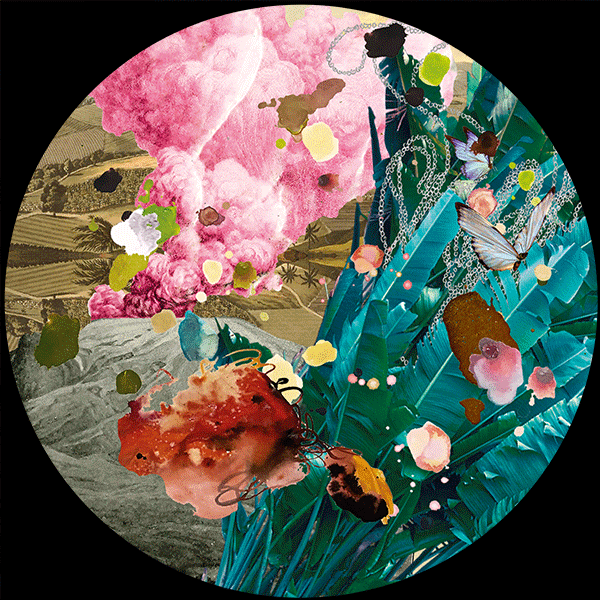
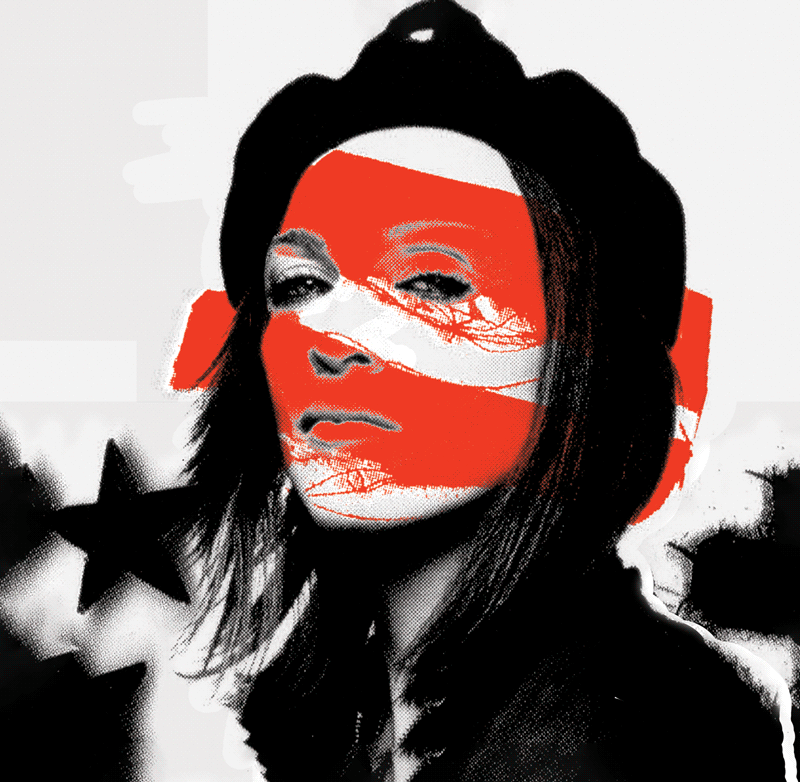
- Animation: More complex than a simple flip, the animation effect can show a sequence of frames, creating the same effect as a movie or GIF file. This might be a character waving, a machine in operation, or any short motion sequence.
- Zoom: The zoom effect gives the impression that the image is moving closer or further away from the viewer. This can be used to draw attention to a particular part of the image or to create a dynamic interaction with the viewer.
- Morph: Morphing allows one image to smoothly transition into another, showcasing a gradual transformation. This effect can be mesmerizing, as it seamlessly blends two images over the viewing angles.
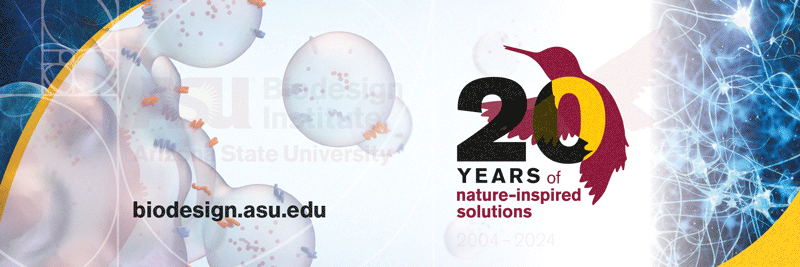
Combining Lenticular Effects for Enhanced Visual Experience
Combining these effects requires careful planning and design to ensure that the transitions are smooth and the intended visual impact is achieved. It involves a sophisticated level of interlacing and alignment of images to match the capabilities of the lenticular lens being used. When executed well, the combination of lenticular effects can produce prints that are not only visually stunning but also highly interactive and immersive.
- 3D and Flip: By combining 3D depth with the flip effect, a print can feature an image that not only changes as the viewing angle shifts but also incorporates elements that appear to move within a three-dimensional space. This combination is particularly effective for storytelling or presenting contrasting views within the same print.
- Depth: This dynamic interaction can draw the viewer’s attention to specific parts of the image, making the viewing experience even more engaging.
The ability to combine these effects expands the creative possibilities of lenticular printing, making it a powerful tool for artists, marketers, and educators seeking to create captivating visual experiences. Whether used for promotional materials, packaging, decorative art, or educational tools, the innovative combinations of lenticular effects can elevate the medium to new heights of visual storytelling.
How Lenticular Printing is Made
Creating a lenticular print involves a precise and methodical process, combining both creative design and technical execution. Below are the steps necessary to take a concept all the way though to a finished lenticular product.
Step-by-Step Process of Creating a Lenticular Print
- Conceptualization: The first step involves defining the visual effect desired (3D, flip, animation, zoom, morph) and the overall objective of the print. This stage is crucial for aligning the creative vision with the technical possibilities of lenticular printing.
- Image Preparation: Depending on the effect chosen, one or more images are prepared. For animations or flips, separate images representing each stage of the animation or the different scenes to flip between are created. For 3D, an image is cut into layers in a Photoshop file with a separate layer for each element of the image.
- Interlacing: This crucial step, done by World3D with proprietary software, involves digitally slicing the prepared images into thin strips and then weaving them together in a specific sequence that matches the lenticular lens’ specifications.
- Printing: The interlaced image is then printed directly to the back of the lens sheet. In most cases, a laminate is married to the back and that can then itself be printed in standard four color process.
- Cutting and Finishing: The final step is cutting the printed and laminated sheet into its desired size and shape. Additional finishing touches, such as mounting or die cutting, can also be applied.
Considerations and Tips for High-Quality Results
- Resolution and Detail: High-resolution images with clear details are essential, as the lenticular process can diminish image clarity. Large format images require 100 dpi at size, while smaller pieces require 300 dpi at size.
- Color and Contrast: Vibrant colors and high contrast help make the lenticular effects more pronounced and appealing.
- Alignment and Calibration: Precise alignment of the interlaced image with the lenticular lens is crucial for achieving the desired effect. Calibration of the printing and lamination equipment is also essential.
- Testing and Prototyping: Creating test prints can help identify any issues with the design or process before producing the final print.
Creating quality lenticular prints requires quality lenses and equipment as well as expertise and experience. It requires a blend of creative vision, technical skill, and attention to detail. Most importantly it requires a concept and artwork that is built to succeed. With that, the result can be a stunning piece of visual art that can convey motion, depth, and transformation in ways that traditional prints simply cannot.
Applications of Lenticular Printing
Lenticular printing’s unique ability to capture attention through movement, depth, and transformation has led to its widespread use across various industries. Here are some of the key applications:
- Marketing and Promotional Materials: Lenticular prints are highly effective in marketing campaigns, where engaging visuals are crucial. Direct mail postcards, posters, and collateral material with lenticular effects can make a lasting impression, ensuring that a brand or product stands out. For instance, a postcard that changes image or reveals contact information as you tilt it can significantly enhance memorability.
- Packaging Industry Applications: The packaging sector has embraced lenticular printing to add value and appeal to product packaging. Lenticular labels on products can display multiple messages or animation, offering interactive experiences right on the shelf. This can be particularly effective in crowded marketplaces, where capturing consumer attention is paramount.
- Decorative Art and Visual Displays: Artists and designers use lenticular printing to create dynamic, engaging pieces of art that invite viewer interaction. Galleries, public spaces, and even home decorators are increasingly incorporating lenticular art to add a modern, interactive element to their spaces.
- Educational Tools and Interactive Products: Lenticular printing offers a unique way to make educational materials more engaging. For example, books or flashcards with lenticular images can transform learning into an interactive experience, making it easier for students to grasp complex concepts or retain information.
- Entertainment and Collectibles: The entertainment industry has always embraced lenticular. Items including movie promotions, DVD and CD covers, and collectible items, often use lenticular printing to stand out and add value. Special edition releases may feature lenticular covers that change or move, adding a unique collectible aspect for fans.
The versatility of lenticular printing allows for its application in a broad range of products and industries, offering unique opportunities for engagement and interaction that traditional printing methods cannot match. Whether for marketing, education, or art, lenticular prints bring images to life, turning everyday objects into interactive experiences that capture and hold attention.
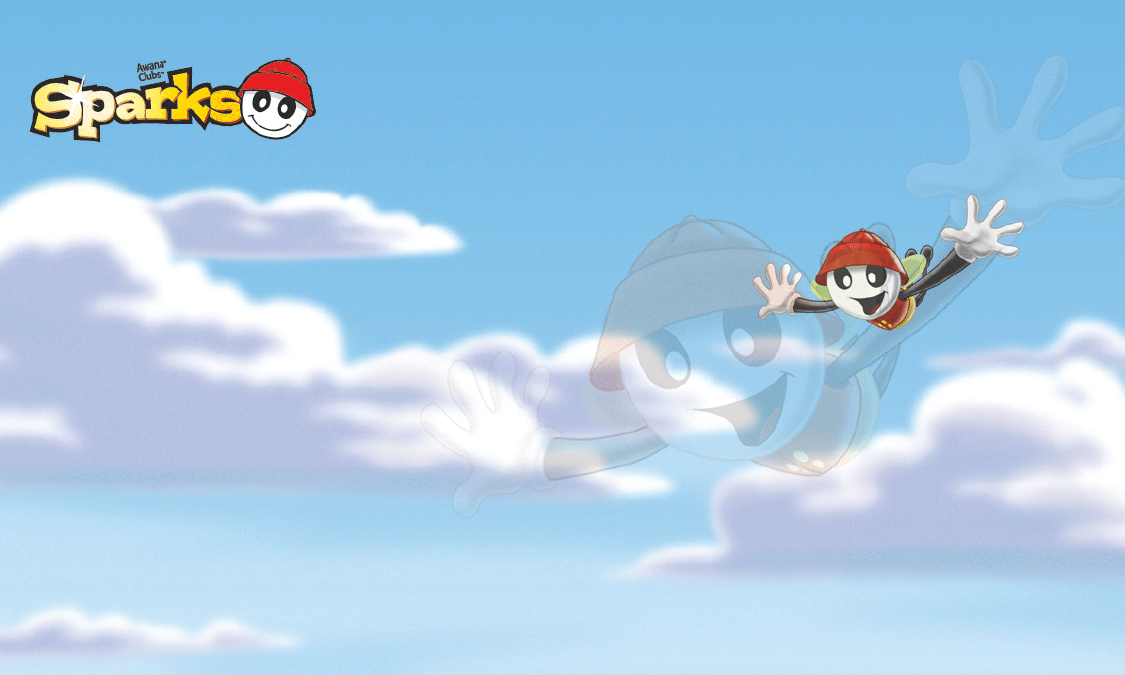
Benefits of Lenticular Printing for Businesses
Lenticular printing offers a powerful tool for enhancing marketing campaigns, capturing attention, and increasing customer engagement with its dynamic effects. Whether it’s through interactive advertisements or eye-catching product packaging, lenticular printing offers a powerful tool for enhancing brand engagement and visibility.
- Enhancing Brand Visibility and Memorability: The unique visual effects of lenticular printing, such as motion and depth, make branded materials much more likely to catch the eye and leave a lasting impression on potential customers. A lenticular poster or advertisement can stand out amidst a sea of static images, making your brand more memorable.
- Engaging Customers Through Interactive Visuals: Lenticular prints invite interaction, as viewers naturally want to move and tilt them to see the changing images or effects. This interactivity can significantly increase engagement, encouraging potential customers to spend more time with your marketing materials and, by extension, with your brand.
- Standing Out in Competitive Markets: In crowded marketplaces, differentiation is key. Lenticular printing allows businesses to present their products, services, or messages in a novel and attention-grabbing way, helping to differentiate from competitors and capture the interest of target audiences.
- Elevating Product Packaging: For consumer goods, packaging plays a crucial role in attracting customers. Lenticular effects on packaging can make products pop off the shelves, offering a dynamic visual appeal that can entice buyers and elevate the perceived value of the product.
- Enhancing Direct Mail Campaigns: Direct mail pieces with lenticular printing are more likely to be noticed and retained by recipients. The novelty and tactile nature of lenticular prints can boost open rates and responses, making direct mail campaigns more effective.
- Supporting Eco-friendly Branding: With advances in printing technology, some lenticular printing processes have become more eco-friendly, offering businesses the opportunity to use sustainable materials without compromising on visual appeal. This aligns with the growing consumer preference for brands with environmentally responsible practices.
By leveraging the unique capabilities of lenticular printing, businesses can create marketing and promotional materials that not only stand out but also foster a stronger connection with their audience. Whether it’s through interactive advertisements, memorable business cards, or eye-catching product packaging, lenticular printing offers a powerful tool for enhancing brand engagement and visibility.
Designing for Lenticular Printing
Designing for lenticular printing involves a unique set of challenges and considerations, but it also opens up a world of creative possibilities. To achieve the best results, understanding the intricacies of lenticular design is crucial. Here’s what you need to know:
- Key Design Software and Tools: Effective lenticular design begins with the right software. Adobe Photoshop and Adobe Illustrator are commonly used for preparing images due to their advanced features and flexibility. But files of any kind can be used as long as they are of high resolution. For the interlacing process—the crucial step that combines multiple images for lenticular effects—we use proprietary software that helps your product by the best it can be. These tools allow us to accurately align and interlace images according to the specifications of the lenticular lens sheet.
- Design Tips for Effective Lenticular Images:
- High-Resolution Images: Start with high-resolution images to ensure clarity and detail, especially since some detail can be lost during the interlacing process. 100 dpi for large format lenticular and 300 dpi for smaller sizes.
- Contrast and Color: Use vibrant colors and high contrast to make the lenticular effects more pronounced and visually appealing. However, it is best to maintain low contrast between images that are changing so as to avoid ghosting.
- Simplicity in Composition: Given the complexity of lenticular effects, simpler compositions often work best. Too many elements can confuse the viewer and dilute the impact of the effect.
- Ask for feedback: Feedback is an important part of the process of successful lenticular printing. Send in your preliminary artwork, or even a concept description, to make sure your on the road to success.
- Common Design Challenges and How to Overcome Them:
- Ghosting: The most common challenge is “ghosting” or crossover between the element from frame to frame of the animation. The best way to avoid this is to maintain tone from frame to frame. A black element in frame “1” will not disappear into solid white in frame “2”. Instead, it will burn in so it will be seen in both frames. A lighter element against a darker (and textured) background will help avoid this.
- Frame Count: Choosing the optimal amount of frames for the particular image is key. The more frames used, the less distinctly each frame will appear. This can work to your advantage in a motion image. But if the idea is to show very different elements in each frame, it’s best to use fewer frames.
- Pixilation: Because the lens is made up of small lines, very fine lines in the artwork can become pixilated under the lens. This can be avoided by using larger fonts, at least 10pt San serif, and keeping all lines to at least 1pt stroke.
- Ghosting: The most common challenge is “ghosting” or crossover between the element from frame to frame of the animation. The best way to avoid this is to maintain tone from frame to frame. A black element in frame “1” will not disappear into solid white in frame “2”. Instead, it will burn in so it will be seen in both frames. A lighter element against a darker (and textured) background will help avoid this.
Designing for lenticular printing requires a blend of artistic vision and technical expertise. By focusing on the key elements of effective design and anticipating common challenges, designers can create captivating lenticular prints that engage and mesmerize viewers.
The Future of Lenticular Printing
The future of lenticular printing looks promising, with technological advancements and creative innovations driving its evolution. As we look forward, several key trends and potential applications are set to shape the landscape of lenticular printing:
- Advancements in Materials and Processes: Ongoing research and development in materials science and printing technology are expected to produce even higher quality lenticular lenses and prints. These advancements could lead to clearer, more detailed images with greater depth and motion effects, expanding the possibilities for designers and artists.
- Integration with Augmented Reality (AR) and Digital Elements: Lenticular printing is poised to bridge the gap between physical and digital media. By integrating QR codes or NFC (Near Field Communication) tags into lenticular prints, users could scan the print to access augmented reality experiences, digital content, or interactive web pages. This hybrid approach can enhance the interactivity and engagement of lenticular prints, offering a multi-layered experience that combines tactile and digital elements.
- Sustainability in Lenticular Printing: As environmental concerns become increasingly important, the demand for eco-friendly printing solutions is rising. The future of lenticular printing will likely see a greater emphasis on sustainable practices, including the use of recycled materials for lenses and eco-friendly inks. These efforts can help reduce the environmental impact of lenticular prints while maintaining their visual appeal.
- Customization and Personalization: Advances in printing technology may enable more cost-effective customization, allowing for small runs of personalized lenticular prints. This could open new markets for customized merchandise, personalized gifts, and targeted marketing campaigns, where consumers can have lenticular prints tailored to their preferences or businesses can create highly personalized promotional materials.
- Emerging Applications in New Markets: Beyond traditional applications in marketing and decor, lenticular printing could find new uses in unexpected areas. For example, architectural elements, vehicle wraps, clothing, and accessory design could all benefit from the dynamic effects of lenticular printing, offering new ways to incorporate movement and depth into various products and spaces.
- Educational and Therapeutic Uses: The interactive and engaging nature of lenticular prints holds potential for educational tools designed to enhance learning and retention. Additionally, there’s an opportunity to explore therapeutic applications, such as visual aids for cognitive therapy or to support individuals with learning disabilities.
The future of lenticular printing is not just about the evolution of the technology itself but also about how it integrates into our changing world. With its unique ability to capture attention and engage viewers, lenticular printing is set to continue its growth, finding new applications and pushing the boundaries of visual communication
FAQs: Lenticular Printing
Q: What is lenticular printing?: Lenticular printing is a technique that creates images with the illusion of depth or the ability to change or move as the image is viewed from different angles. It utilizes a lenticular lens overlay to achieve these effects.
Q: How does lenticular printing work?: The process involves combining multiple images into a single composite image through an interlacing process. This composite is then printed and aligned with a lenticular lens sheet, which has many small lenses or ridges. As you change your viewing angle, different images are visible, creating effects like 3D, flip, animation, zoom, and morph.
Q: What are the main types of lenticular effects?: There are really only two overarching lenticular effects, animation and 3D. Animations include many sub-classifications such as flip (image change), animation (motion), zoom (distance change), and morph (transformation). 3D lenticular creates the illusion of depth, without any change or movement. These are often mislabeled as holograms, which is the word most people associate with 3D imagery.
Q: Can different lenticular effects be combined in one print?: Yes, 3D depth and flip can be combined to create more complex and engaging visuals.
Q: What applications are there for lenticular printing?: Lenticular printing is used in marketing materials, packaging, decorative art, educational tools, and even clothing. It offers a unique way to capture attention and engage audiences.
Q: What are the benefits of lenticular printing for businesses?: For businesses, lenticular printing can enhance brand visibility, engage customers through interactive visuals, and help stand out in competitive markets. It’s particularly effective for marketing campaigns and promotional materials.
Q: What should I consider when designing for lenticular printing?: Key considerations include using high-resolution images, ensuring high contrast and vibrant colors, keeping designs simple, designing around limitations of the medium. Specialized design and interlacing software is used, but not needed by the client.
Q: How do I choose a lenticular printing service?: Look for a provider with extensive experience and a portfolio of high-quality work. Consider their technology, customer service, turnaround time, and pricing. Questions regarding their process, file specifications, and proofing services can help ensure they meet your needs.
Q: Is lenticular printing environmentally friendly?: Advances are being made to make lenticular printing more sustainable, including the use of recycled materials and eco-friendly inks. However, the environmental impact can vary depending on the specific materials and processes used by the printing service.
Q: What is the future of lenticular printing?: The future of lenticular printing includes advancements in materials and processes, integration with digital elements like augmented reality, a focus on sustainability, personalized and customized prints, and new applications in various industries.
Q: How can I effectively utilize lenticular printing for marketing campaigns?: Lenticular printing offers several exciting ways to enhance your marketing campaigns. Consider using it for attention-grabbing direct mail pieces, interactive trade show displays, memorable promotional products, and more. Its dynamic visuals help you capture attention, increase engagement, and leave a lasting impression on your target audience.
Q: How do I choose a lenticular printing service?: Look for a provider like World3D, with extensive experience, a portfolio of high-quality work, and a commitment to customer service. Consider their technology, customer service, turnaround time, and pricing. Questions regarding their process, file specifications, and proofing services can help ensure they meet your needs.
Conclusion
At World3D, we’re passionate about harnessing the power of lenticular printing to bring your ideas to life in visually stunning and engaging ways. Let us help you explore the exciting possibilities of this unique technology.
Lenticular printing, with its unique ability to create images that move, change, and captivate, stands as a testament to the fascinating intersection of art and technology. Throughout this guide, we’ve explored the nuances of lenticular printing, from its principles and processes to its myriad applications across various industries. We’ve seen how it can enhance marketing efforts, bring creative visions to life, and even transform educational materials into interactive learning experiences.
The benefits of lenticular printing for businesses are clear: it offers a powerful way to stand out in a crowded market, engage with customers on a deeper level, and create memorable brand experiences. Whether through dynamic promotional materials, innovative product packaging, or striking visual displays, lenticular printing offers a unique medium for creative expression and communication.
As we look to the future, the potential for lenticular printing continues to expand. Technological advancements promise even more impressive effects, greater sustainability, and new applications that stretch the imagination. The integration of digital elements, such as augmented reality, opens up exciting possibilities for interactive experiences that blend the physical and digital worlds in novel ways.
For designers, marketers, educators, and creators of all kinds, lenticular printing offers a versatile tool for bringing ideas to life in visually stunning and engaging ways. As this technology continues to evolve, it will undoubtedly uncover new opportunities for innovation and creativity.
We encourage you to explore the possibilities of lenticular printing for your own projects, whether for business or personal expression. The magic of lenticular effects not only captures attention but also inspires wonder, making it a remarkable medium for storytelling, marketing, and artistic exploration.



